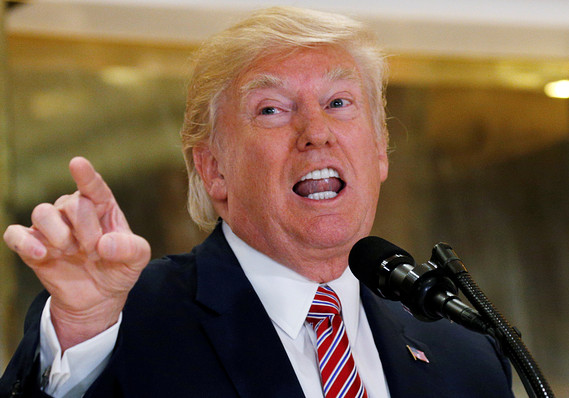 Reuters
Reuters
President Trump has been agitating for the Federal Reserve to push interest rates even lower. His latest gambit to extend tariffs to all Chinese imports might just do the trick.
The president on Thursday threw a hand grenade into U.S. and international financial markets by threatening to add a 10% tariff on virtually all Chinese goods in September unless trade talks make more progress.
The Dow Jones Industrial Average DJIA, +0.00% and S&P 500 SPX, -0.73% extended their losses in Friday trades and the yield on the 10-year Treasury TMUBMUSD10Y, +0.00% fell.
The Fed cut already low U.S. interest rates this week mainly because it’s worried about the ongoing U.S. conflict with China over trade rules. The clash between the world’s two largest economies has blunted global growth and undermined key segments of the U.S. economy such as manufacturing.
Read: Fed cuts interest rates by quarter point, but won’t commit to more easing
The quarter-point cut in the fed funds rate, to a range of 2% to 2.25%, wasn’t enough for Trump. The president blasted Powell and the Fed and said the central bank should have signaled further rate reductions.
If the White House follows through on its threat, analysts say, it will do further damage to the global economy and also harm the United States. The cost of many consumer goods would rise, and American manufacturers would suffer another blow.
No matter. Trump has often used threats as a negotiating tactic, and he clearly doesn’t want the trade dispute to drag on through the 2020 election and shadow the economy.
Read: Trade fights sap manufacturers as growth falls to slowest pace in three years
“While the tariff threat should not be discounted as a bluff, the Trump administration is clearly trying to kill two birds with one stone — reaching a trade deal with China and forcing the Fed to cut interest rates,” said chief U.S. economist Gregory Daco of Oxford Economics.
The Powell Fed, on the other hand, appears to have limited its own flexibility by tying the possibility of rate cuts to the outcome on trade talks. Wall Street now expects another rate cut at the Fed’s next meeting in September.
In short, Powell can say all he wants that the Fed doesn’t respond to political pressure, but that’s exactly what it’s doing.
The flareup in trade tensions also appears to have rendered moot the objections of two senior Fed officials who voted against cutting rates.
Eric Rosengren, president of the Boston Fed, said on Friday he did not see “a clear and compelling case” to reduce rates with unemployment near a 50-year low, stocks close to record highs, inflation near 2% and corporate debt at extremely high levels.
Read: U.S. adds 164,000 new jobs in July to keep unemployment near 50-year low of 3.7%
At this point none of that really matters.
“The only game in town remains the trade skirmish and how that feeds into the Fed’s reaction function,” said chief U.S. economist Tom Porcelli of RBC Capital Markets.






